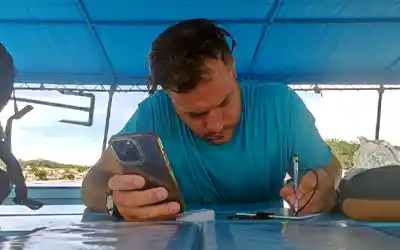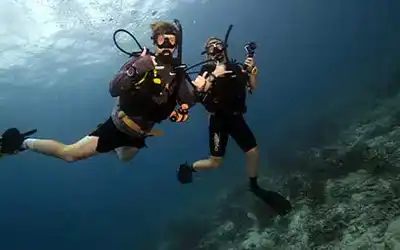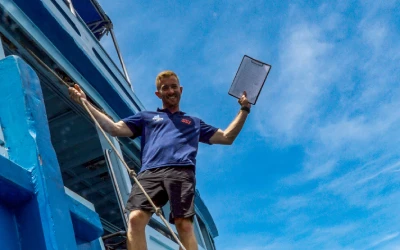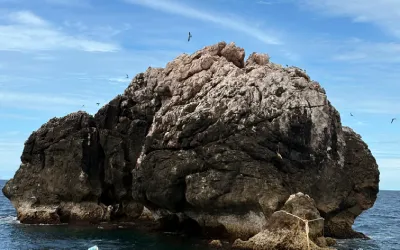Master Your Surface Air Consumption: Discover How to Calculate and Lower Your SAC Rate
Want to get better at reducing your air consumption while diving? The key is learning your surface air consumption (SAC) rate. Think of it as the diving version of “miles per gallon”. Once you know your SAC rate, you’ll be able to predict how long your tank will last, reduce your stress, and enjoy safer, longer dives.
At Crystal Dive Koh Tao, we help divers take control of their air consumption. With a few simple steps, you can learn how to calculate your SAC rate and how to lower your SAC rate while diving.
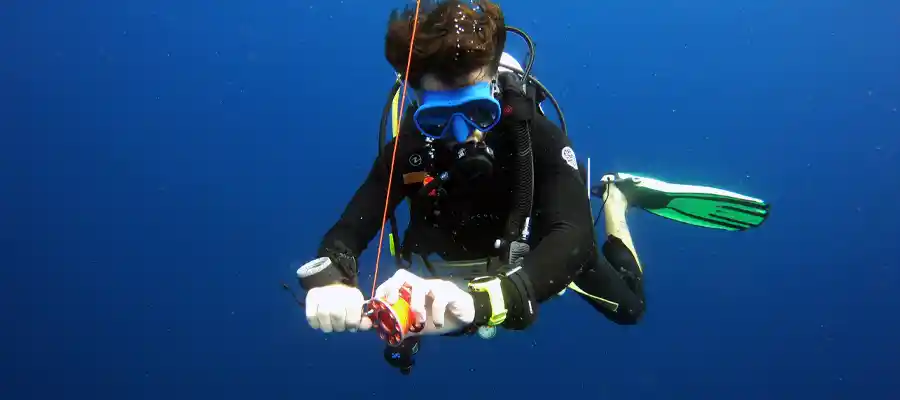
What Is Surface Air Consumption in Scuba Diving?
Your surface air consumption rate is the amount of air you breathe per minute at the surface, usually measured in litres per minute (L/min). But a SAC rate is more than just a number. It’s a powerful dive-planning tool.
Learning how to calculate your SAC rate allows you to plan dives with high precision, a trait that is the hallmark of a highly skilled diver.
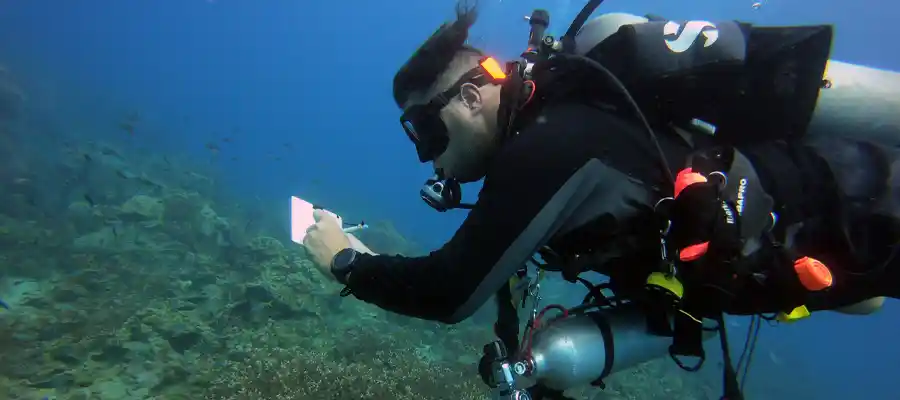
Benefits of Tracking Your SAC Rate
Learning how to calculate your surface air consumption rate will make you a better diver. Once you know your SAC rate, you can plan dives more accurately and avoid last-minute low-air surprises that add unnecessary stress.
As you refine your breathing techniques, you’ll see your efficiency improve, helping you to reduce air consumption while diving and gradually lower your SAC rate.
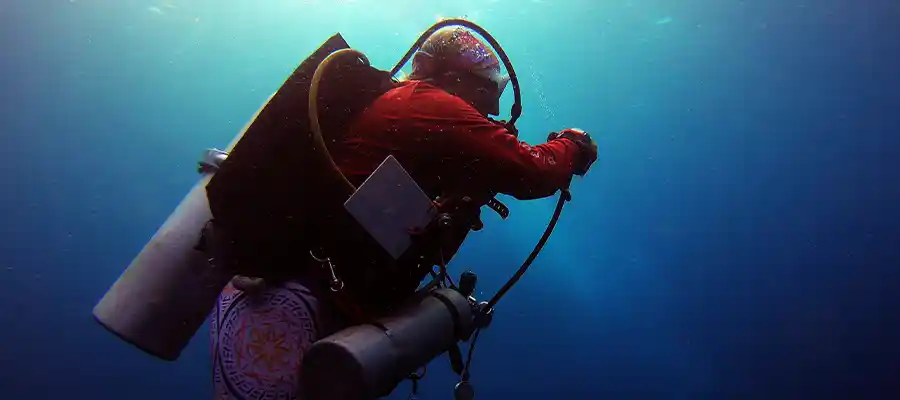
How to Calculate Your SAC Rate (The Easy Way)
Now that you know why it matters, let’s look at how to calculate your SAC rate. You don’t need spreadsheets or complicated maths.
With just a few tools and some basic data, you can quickly figure out your surface air consumption rate and start using it to plan dives with confidence.
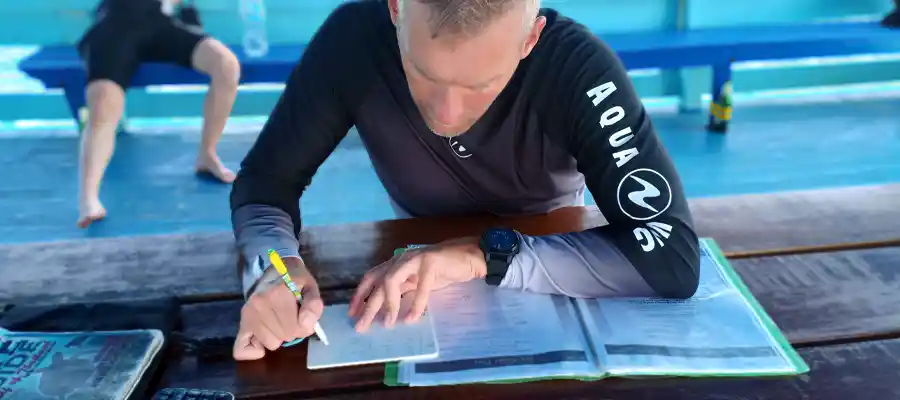
Step 1: Gather Your Tools
To calculate your SAC rate, you will need:
- A dive computer or timer to measure your dive time
- Average depth from the dive from your computer log
- Depth gauge to confirm your average depth
- Your tank size (usually 10L, 12L, or 15L)
- Starting and ending tank pressure (in bar) to know how much gas you used

Step 2: Collect the Data
Before you start your descent, make a note of your starting tank pressure.
At some point during your dive, cruise at a steady depth for at least 10 minutes while keeping your buoyancy under control and breathing normally.
After the dive, record your ending tank pressure and check your average depth on your dive computer.
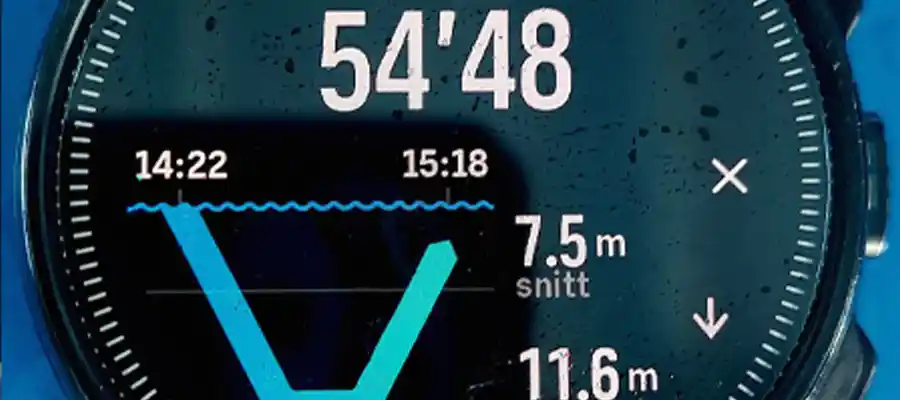
Step 3: Do the Quick Maths
Here’s the formula that divers use to calculate surface air consumption rates:
- Pressure Used = Start Pressure – End Pressure
- Air Consumption at Depth = Pressure Used / Time (in minutes)
- Depth in ATA = (Depth in meters / 10) + 1
- SAC Rate = Air Consumption at Depth / ATA
- Optional Volume SAC = SAC Rate × Tank Size
Put simply: you take how much gas you used at depth, adjust for pressure, and you’ve got your surface air consumption rate.
Example SAC Rate Calculation
Let’s say you did a 15-minute dive at 20 meters with a 12L tank.
Start pressure: 200 bar
End pressure: 150 bar
Here’s how to calculate your SAC rate using this information.
Pressure Used = 200 – 150 = 50 bar
Air Consumption at Depth = 50 ÷ 15 = 3.33 bar/min
Depth in ATA = (20 / 10) + 1 = 3 ATA
SAC Rate = 3.33 / 3 = 1.11 bar/min
Volume SAC = 1.11 × 12 = 13.32 L/min
At the surface, this example diver breathes about 13 litres per minute. This might sound like a lot, but trained divers use between 15-20 litres of breathing gas per minute, on average. If you’re a beginner, it’s completely normal to have a surface air consumption rate above 20L/min.
Through practice and additional training, you can start to lower your SAC rate and reduce your air consumption while diving, so you can have longer dives.
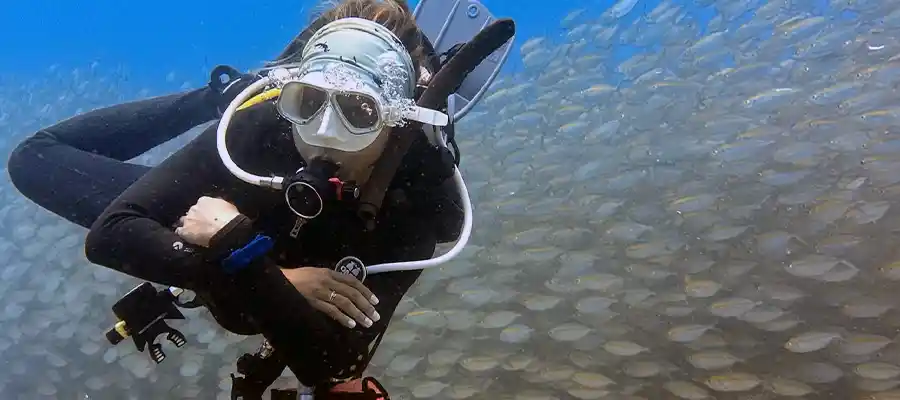
Pro Tips to Lower Your SAC Rate
Once you know your surface air consumption rate, the next step is to work on making it better. Small changes in your technique and habits can help reduce air consumption while diving and give you more time to explore underwater. Here are a few proven strategies to help lower your SAC rate:
Just relax: Stress and tension increase your breathing rate. Focus on slow, steady breaths and remind yourself to stay calm. This alone can significantly reduce your gas usage.
Perfect your buoyancy: Constant finning and adjusting wastes both energy and air. Practice your buoyancy control so you can hover comfortably without too much movement.
Streamline your scuba gear: Loose hoses, dangling accessories, and overly bulky gear will increase drag. The more streamlined you are, the less effort it takes to move and the less air you’ll consume.
Stay dive-fit: Good fitness supports efficient breathing. Simple exercises like swimming, yoga, and basic cardio training can improve lung capacity and breathing efficiency.
SAC vs Respiratory Minute Volume: What’s the Difference?
When divers talk about surface air consumption rates, they’re really referring to a concept in medicine called “respiratory minute volume” rate. Both terms measure how much breathing gas you use per minute; the only difference is the context.
Respiratory minute volume is a general medical term that describes the total volume of air a person inhales and exhales in one minute.
Surface air consumption is the diving-specific version, adjusted for depth and pressure.
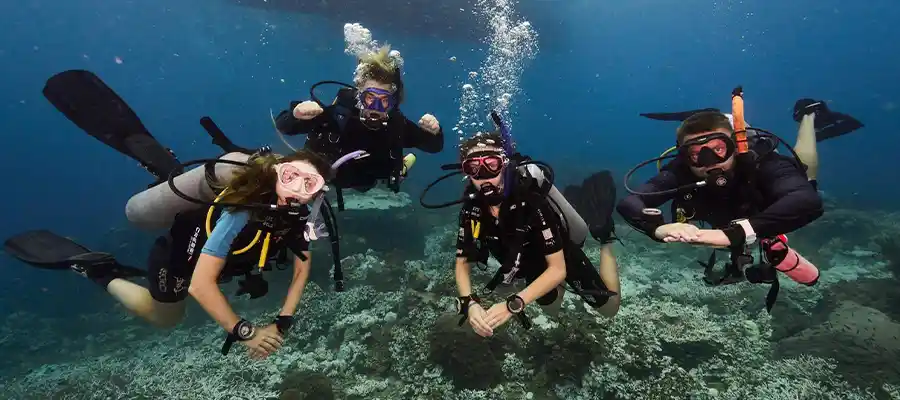
The Bottom Line on Surface Air Consumption Rates
Understanding your surface air consumption rate is a practical, confidence-building skill for anyone who wants to become a better diver. Once you know how to calculate your SAC rate, you’ll be able to plan dives with precision, reduce air consumption while diving, and steadily lower your SAC rate over time.
Ready to take control of your surface air consumption rate? Contact us today to find out how we can help you level up your diving.
